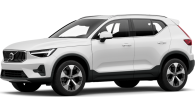The Toyota Fortuner is a serious seven seater off-roader 4x4 wagon that is based on the popular Toyota HiLux ute, but has more family-friendly features and a practical presence to it.
The Fortuner range was updated late in 2020, with a number of changes designed to keep it competitive with rivals like the Ford Everest, Mitsubishi Pajero Sport and its own sibling, the Toyota Prado.
Have the changes been worthwhile? This review will aim to answer that question, but also a number of frequently asked questions (FAQs) about the Toyota Fortuner range.
Toyota Fortuner 2021: GXL
| Engine Type |
Diesel Turbo 4, 2.8L |
| Fuel Type |
Diesel |
| Fuel Efficiency |
7.6L/100km (combined) |
| Seating |
7 |
| Price From |
$45,650 - $53,130 |
| Safety Rating |
|
Verdict
The Toyota Fortuner will be the right car for some people in the market for a 4WD seven-seater. But not all people.
It plays an interesting role in the company’s range – smaller and cheaper than a Prado, more capable than a Kluger, and an interesting wagon alternative to a HiLux.
If you’re the sort of person who knows you’ll need the serious off-road capability the Fortuner has to offer, and on a regular basis, then it might be just the thing for you. Otherwise, there are more competitive and practical choices, not only from Toyota, but from Ford and Mitsubishi, among others.
Pricing Guides
![]()
$49,707
Based on 126 cars listed for sale in the last 6 months.
Range and Specs
| Vehicle |
Specs |
Price* |
|
Crusade
|
2.8L, Diesel, 6 SPEED ELECTRONIC AUTOMATIC
|
$52,250 - $60,060
|
|
GX
|
2.8L, Diesel, 6 SPEED ELECTRONIC AUTOMATIC
|
$44,440 - $51,700
|
|
GX NAV
|
2.8L, Diesel, 6 SPEED ELECTRONIC AUTOMATIC
|
$41,580 - $48,950
|
![]()
Matt Campbell
Managing Editor - Head of Video
Matt Campbell has been at the forefront of automotive media for more than a decade, working not only on car reviews and news, but also helping manage automotive outputs across print, online, video and audio.
After completing his media degree at Macquarie University, Matt was an intern at a major news organisation as part of the motoring team, where he honed his skills in the online automotive reviews and news space. He did such a good job there they put him on full time, and since then he has worked across different automotive media outlets, before starting with CarsGuide in October 2017.
At CarsGuide Matt has helped shape the video output of the business, while also playing a key role in management behind the scenes, and helping in-market new car buyers make the right choice by continually evolving CarsGuide's comparison reviews. Driving more than 100 cars a year seemed like a dream to Matt when he first started out, but now it's all just part of the job - a job he loves and plans to stay in for a long time to come.
Matt is also an expert in used car values, as he's always on the hunt for a bargain - be it a project beater or a prime example of the breed. He currently owns a 2001 Audi TT quattro and a 2007 Suzuki Jimny JLX.
About Author
Disclaimer: The pricing information shown in the editorial content (Review Prices) is to be used as
a guide only and is based on information provided to
Carsguide Autotrader Media Solutions Pty Ltd (Carsguide) both by third party sources and the car
manufacturer at the time of publication. The Review Prices were correct at the time of publication.
Carsguide does not warrant or represent that the information is accurate, reliable, complete,
current or suitable for any particular purpose. You should not use or rely upon this information
without conducting an independent assessment and valuation of the vehicle.

.jpg)
.jpg)
.jpg)
.jpg)
.jpg)




































.png)








.png)



.jpg)
.JPG)
.jpg)

.jpg)

